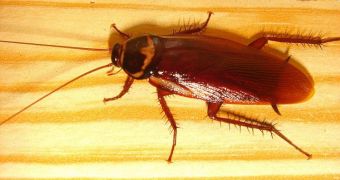Many scientists have been wondering how is it that cockroaches seem to flock to the best sources of food in the habitat they live in. When faced with multiple selections of food, the insect will always choose the best one, and researchers in the United Kingdom now believe they know how and why. The research group, based at the Queen Mary, University of London, determined that the cockroaches basically shared recommendations with each other, informing one another about the best available “cuisine” in their local environment, ScienceDaily reports.
“Cockroaches cost the UK economy millions of pounds in wasted food and perishable products. Better understanding of how they seek out our food would allow us to develop better pest control measures, which are frequently ineffective and involve the use of insecticides that can have health side-effects,” says Queen Mary's School of Biological and Chemical Sciences expert Dr Mathieu Lihoreau. He was the leader of the new research effort. The scientist adds that the common behavior cockroaches exhibit helps explain why they are found in such high number most of the times.
“These observations coupled with simulations of a mathematical model indicate that cockroaches communicate through close contact when they are already on the food source. This is in contrast with the honeybees' waggle dance or ants' chemical trails, which are sophisticated messages that guide followers over a long distance. Although we think they signal to other cockroaches using a 'foraging pheromone', we haven't yet identified it; potential candidates include chemicals in cockroach saliva, and cuticular hydrocarbons, which cover the insects' bodies,” the team leader adds.
The new study was conducted on hungry insects, which were placed in an enclosure providing them with two food sources. Researchers expected to see the bugs split up, and eat randomly from any pile, but they in fact gathered around the pile containing the best food. “We should definitively pay more attention to cockroaches and other simple 'societies' as they provide researchers with a good models for co-operation and emergent properties of social life, that we could extrapolate to more sophisticated societies, like ours,” Lihoreau concludes. Details of the new investigation appear in the Springer journal Behavioral Ecology and Sociobiology.

 14 DAY TRIAL //
14 DAY TRIAL //